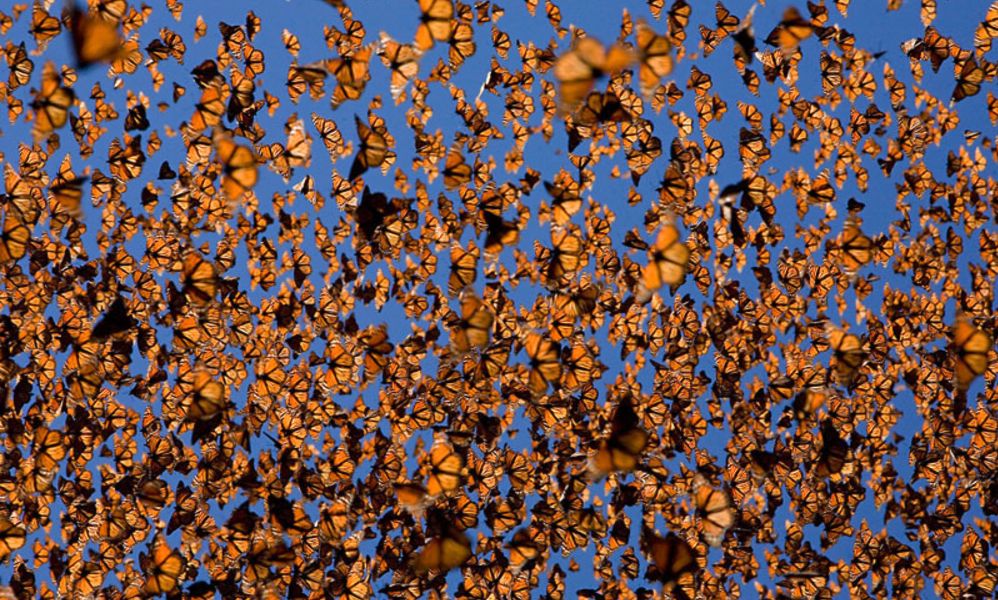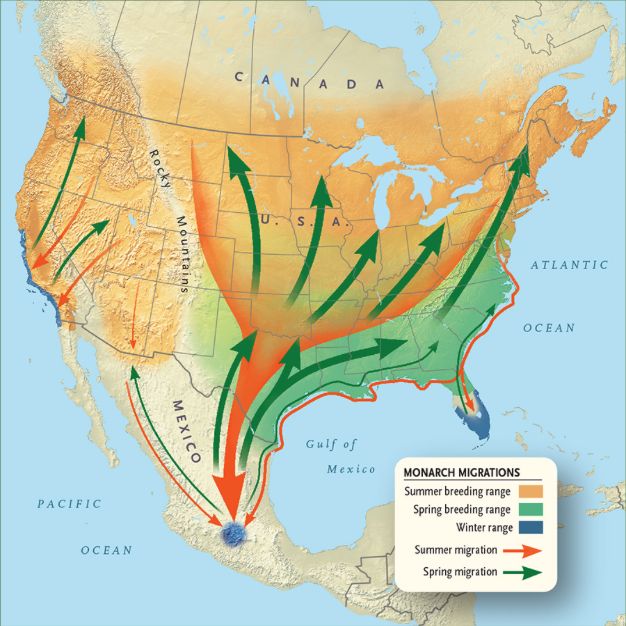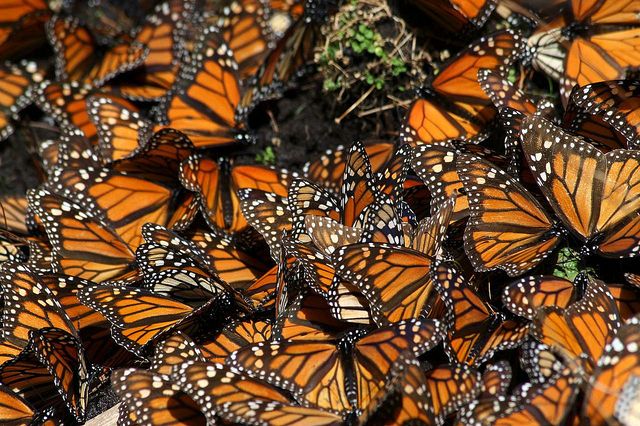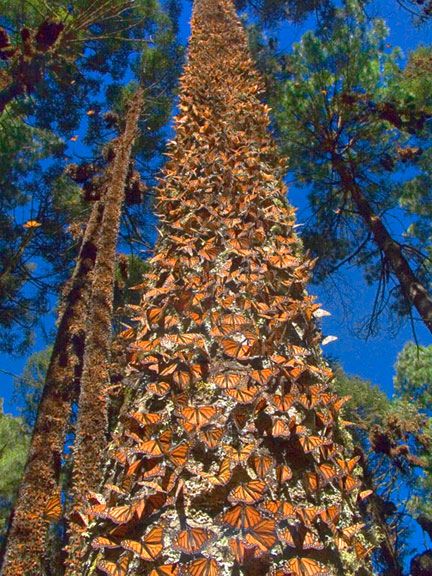Visiting Mexico’s Annual Monarch Butterfly Migration is Easier Than Ever
Visiting Mexico and its spectacular Monarch Butterfly Migration is easier than it’s ever been. Many people are unaware that Mexico is home to one of the most spectacular nature migrations in the world. Most people are familiar with Africa’s large migrations of Elephant, Wildebeest and other large animals, but few are aware that the largest annual migration of any species on the planet occurs in Mexico. The Monarch butterfly spends the summer months in northeastern US and Canada before migrating south every year in a remarkable 3000 mile journey to the highlands of south-central Mexico.
The delicate Monarch Butterflies arrive in mid-to late October every year and spend the next five months clustered together in treetops in numbers so great that they have been known to bend or break large tree branches with their combined weight. Clustering together like this allows the butterflies to retain heat and survive in the cool highland nights of the region. Nobody knows exactly how many butterflies can be predicted every year. Their numbers are estimated by the number of acres of treetops that are covered by butterflies in their resplendent orange and black colors. Numbers have been dropping from a high of around a billion in 1996 to only 35 million last year. Threats to the butterflies include habitat loss due to human activities, pesticides and climate change.
Interestingly, as the life span of the Monarch Butterfly ranges from two to seven months, no individual butterfly lives long enough to make the round trip journey. It is unclear as to how the returning butterflies navigate to the breeding sites of their ancestors in Mexico, however it is thought that the flight patterns are inherited.
There are 14 major butterfly colonies in the stare of Mexico and the state of Michoacán. Those in Michoacán are the easiest to visit, as an easy day trip from the stunning colonial city of Morelia. Overnight trips are more enjoyable, however, spending the night in the delightful picturesque, cobblestoned mining town of Angangueo at an elevation of 8,500 feet (2,580m).
Visiting Mexico’s Monarch Butterfly migration is something that should be on every nature traveler’s bucket list. Visit our Mexico page at www.blueworldjourneys.com/mexico.html for more information about this fascinating country, full of surprises.




